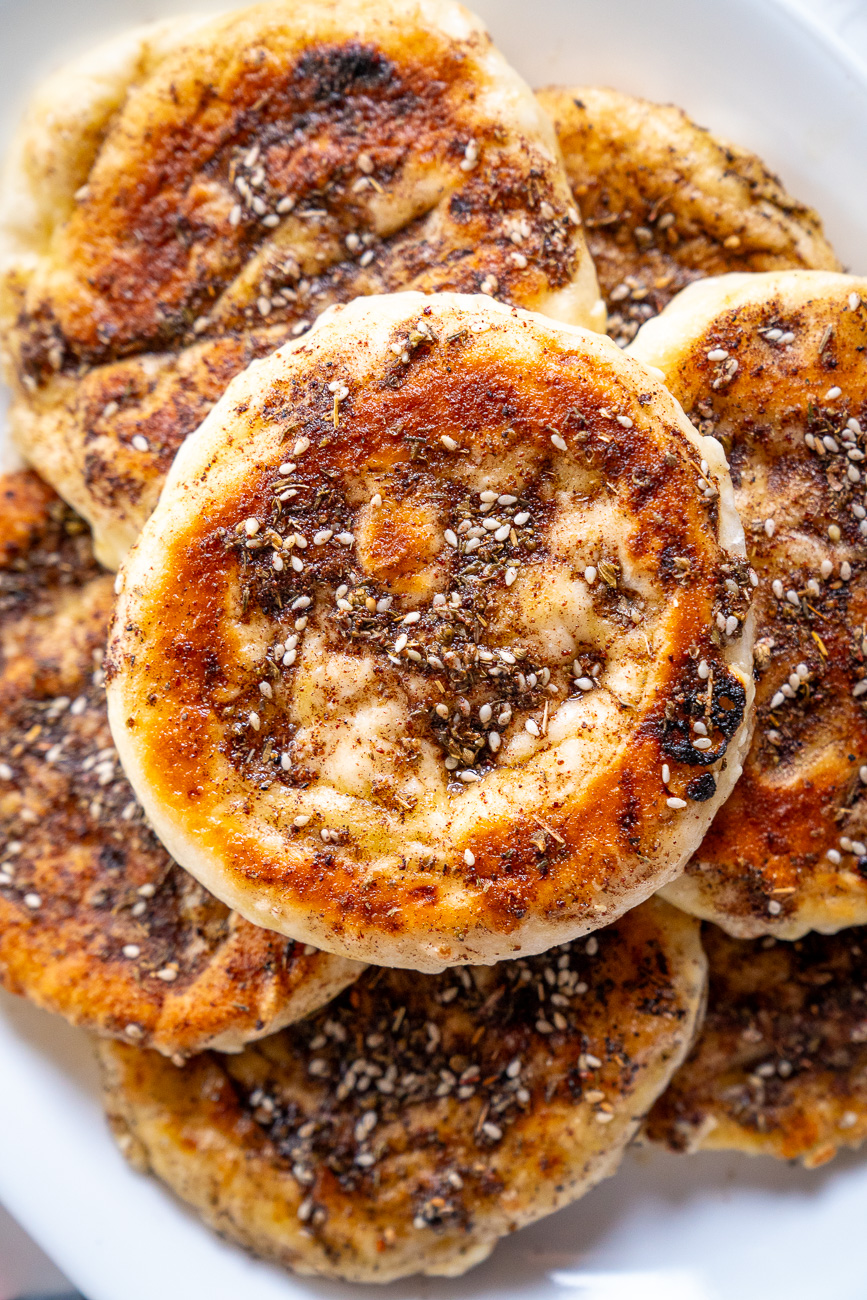Are you tired of using the same old spices in your cooking? Do you want to add a new and unique flavor to your dishes? Look no further than za’atar! This Middle Eastern spice blend has been gaining popularity in recent years for its delicious taste and numerous health benefits. In this article, we will explore everything you need to know about za’atar, from its history and origin to traditional recipes and creative ways to use it in your cooking. So let’s dive in and discover the easy ways to cook with za’atar!
Introduction to Za’atar

Za’atar is a spice mixture made with dried thyme, oregano, marjoram, and other herbs, mixed with sesame seeds, sumac, and salt. It is commonly used in cuisines across the Mediterranean and Middle East, including Lebanon, Syria, Israel, and Jordan. The name “za’atar” comes from the Arabic word for thyme, which is one of the main ingredients in this spice blend.
The exact recipe for za’atar can vary from region to region and even from household to household. Some may include additional ingredients such as cumin, coriander, or fennel seeds, while others may omit certain herbs or spices. However, the key components of za’atar remain the same – thyme, sesame seeds, sumac, and salt.
Benefits of Cooking with Za’atar

Aside from its delicious taste, za’atar also offers numerous health benefits. Let’s take a look at some of the reasons why you should incorporate this spice blend into your cooking:
Rich in Antioxidants
Za’atar contains high levels of antioxidants, which help protect our cells from damage caused by free radicals. Free radicals are unstable molecules that can lead to chronic diseases such as cancer, heart disease, and Alzheimer’s. The main source of antioxidants in za’atar is sumac, a spice made from dried and ground berries of the sumac plant.
Anti-inflammatory Properties
Thyme, one of the main ingredients in za’atar, has anti-inflammatory properties that can help reduce inflammation in the body. Chronic inflammation has been linked to various health issues, including heart disease, diabetes, and arthritis. By adding za’atar to your meals, you can help combat inflammation and improve your overall health.
Boosts Immune System
Za’atar is also rich in vitamins and minerals, making it a great addition to your diet for boosting your immune system. Thyme, in particular, is known for its high levels of vitamin C, which helps strengthen the immune system and fight off infections. Additionally, sumac contains high levels of vitamin A, which is essential for maintaining healthy skin and eyesight.
Improves Digestion
The combination of herbs and spices in za’atar can also aid in digestion. Thyme, oregano, and marjoram are all known for their digestive properties, while sumac has been used in traditional medicine to treat stomach issues such as indigestion and diarrhea. Adding za’atar to your meals can help improve your digestion and prevent digestive problems.
History and Origin of Za’atar
Za’atar has a long history dating back to ancient times. It is believed to have originated in the Levant region, which includes modern-day Lebanon, Syria, Jordan, and Israel. The exact origin of za’atar is unclear, but it is mentioned in ancient texts and has been used in Middle Eastern cuisine for centuries.
In the past, za’atar was considered a symbol of hospitality and was often served to guests as a sign of welcome. It was also believed to have medicinal properties and was used to treat various ailments. Today, za’atar is still an essential ingredient in Middle Eastern cuisine and is enjoyed by people all over the world.
Traditional Za’atar Recipes
Za’atar can be used in a variety of dishes, from appetizers to main courses. Here are two traditional recipes that showcase the versatility of this spice blend:
Za’atar Manakish (Flatbread)

Manakish is a popular Levantine dish that consists of flatbread topped with za’atar and olive oil. It is often served for breakfast or as a snack and can be found in bakeries and street food stalls across the region. Here’s how you can make your own za’atar manakish at home:
Ingredients:
- 2 cups all-purpose flour
- 1 tsp instant yeast
- 1 tsp sugar
- 1 tsp salt
- 1 tbsp olive oil
- 1 cup warm water
- 3 tbsp za’atar
- 3 tbsp olive oil
Instructions:
- In a large bowl, mix together the flour, yeast, sugar, and salt.
- Add the olive oil and warm water to the dry ingredients and mix until a dough forms.
- Knead the dough on a floured surface for about 5 minutes, then place it back in the bowl and cover with a clean kitchen towel. Let it rise for 1 hour.
- Preheat your oven to 450°F (230°C).
- Roll out the dough into a circle or rectangle, depending on your preference.
- Mix the za’atar and olive oil in a small bowl, then spread it evenly over the dough.
- Bake the manakish for 10-12 minutes, or until the edges are golden brown.
- Serve hot and enjoy!
Za’atar Roasted Chicken
This recipe takes a traditional roasted chicken and adds a flavorful twist with the addition of za’atar. It’s a simple and delicious way to incorporate this spice blend into your cooking.
Ingredients:
- 1 whole chicken
- 2 tbsp za’atar
- 2 tbsp olive oil
- 1 tsp salt
- 1 tsp black pepper
- 1 lemon, sliced
- Fresh thyme sprigs (optional)
Instructions:
- Preheat your oven to 375°F (190°C).
- In a small bowl, mix together the za’atar, olive oil, salt, and black pepper.
- Place the chicken in a roasting pan and rub the za’atar mixture all over it, making sure to get under the skin as well.
- Stuff the cavity of the chicken with the lemon slices and thyme sprigs, if using.
- Roast the chicken for 1 hour and 30 minutes, or until the internal temperature reaches 165°F (74°C).
- Let the chicken rest for 10 minutes before carving and serving.
Creative Ways to Use Za’atar in Cooking
Aside from traditional recipes, there are many creative ways to use za’atar in your cooking. Here are three ideas to get you started:
Za’atar Hummus
Hummus is a popular Middle Eastern dip made from chickpeas, tahini, and various spices. Adding za’atar to your hummus will give it a unique and delicious flavor. Simply mix in a tablespoon of za’atar to your homemade or store-bought hummus and enjoy with pita bread or vegetables.
Za’atar Roasted Vegetables
Roasted vegetables are a healthy and flavorful side dish that can be easily elevated with the addition of za’atar. Toss your favorite vegetables, such as carrots, zucchini, and bell peppers, with olive oil, salt, and za’atar, then roast in the oven until tender and golden brown.
Za’atar Salad Dressing
Za’atar can also be used to make a delicious and unique salad dressing. Mix together olive oil, lemon juice, honey, and za’atar for a tangy and flavorful dressing that will elevate any salad.
Conclusion
In conclusion, za’atar is a versatile spice blend that offers not only a delicious taste but also numerous health benefits. Its rich history and cultural significance make it a must-try for any food lover. Whether you use it in traditional recipes or get creative with it in your cooking, za’atar is sure to add a unique and flavorful touch to your meals. So go ahead and spice up your dishes with this Middle Eastern gem!
